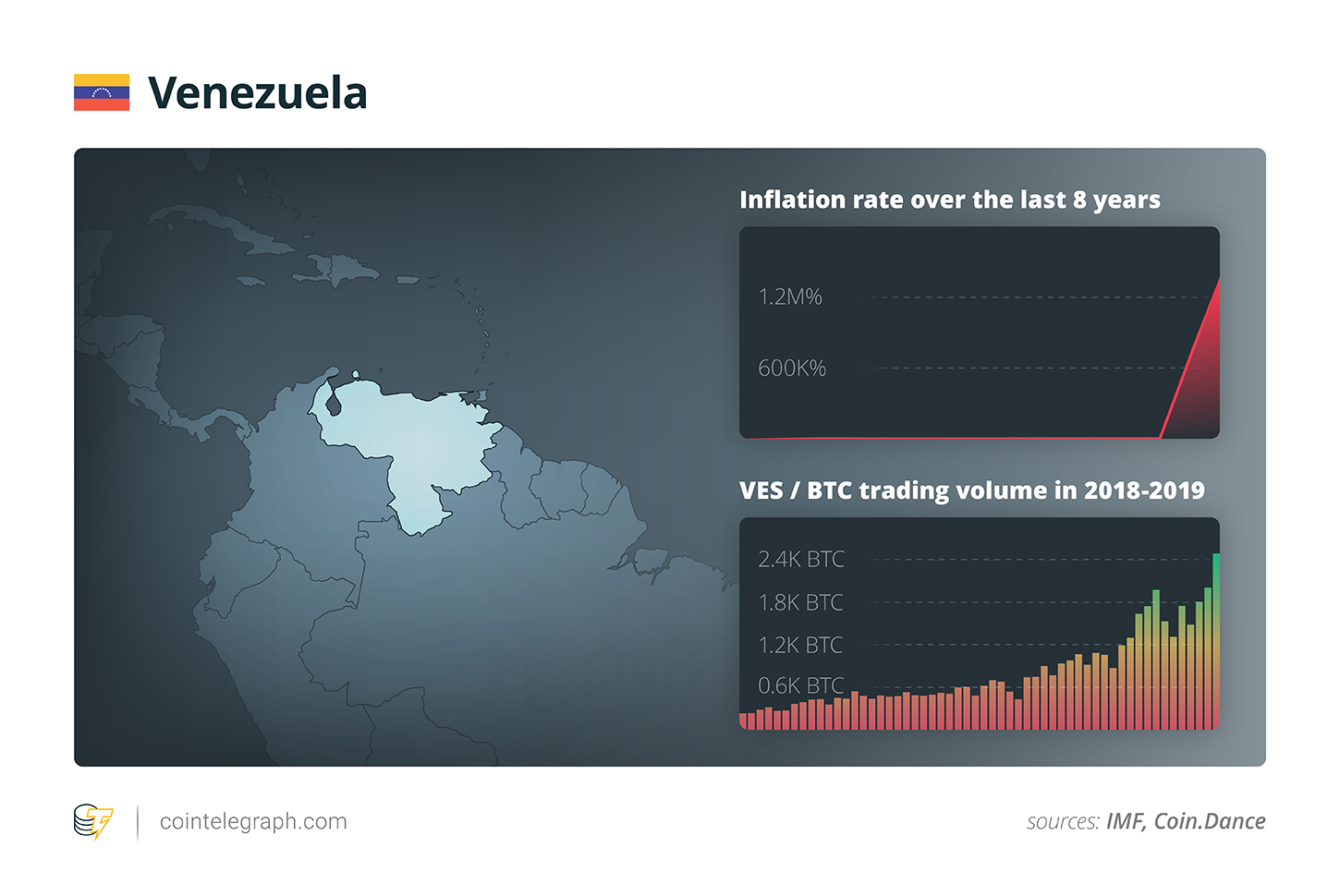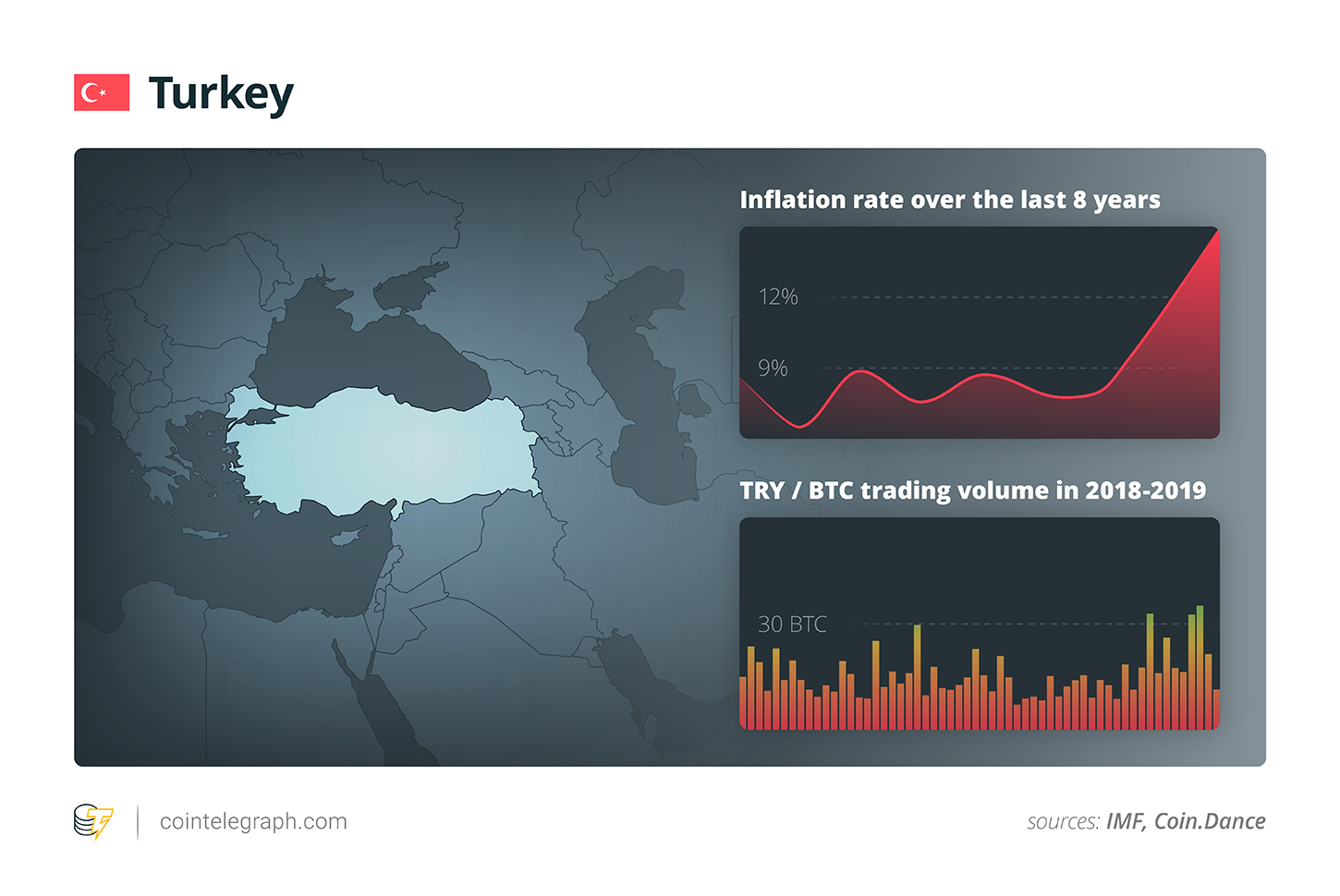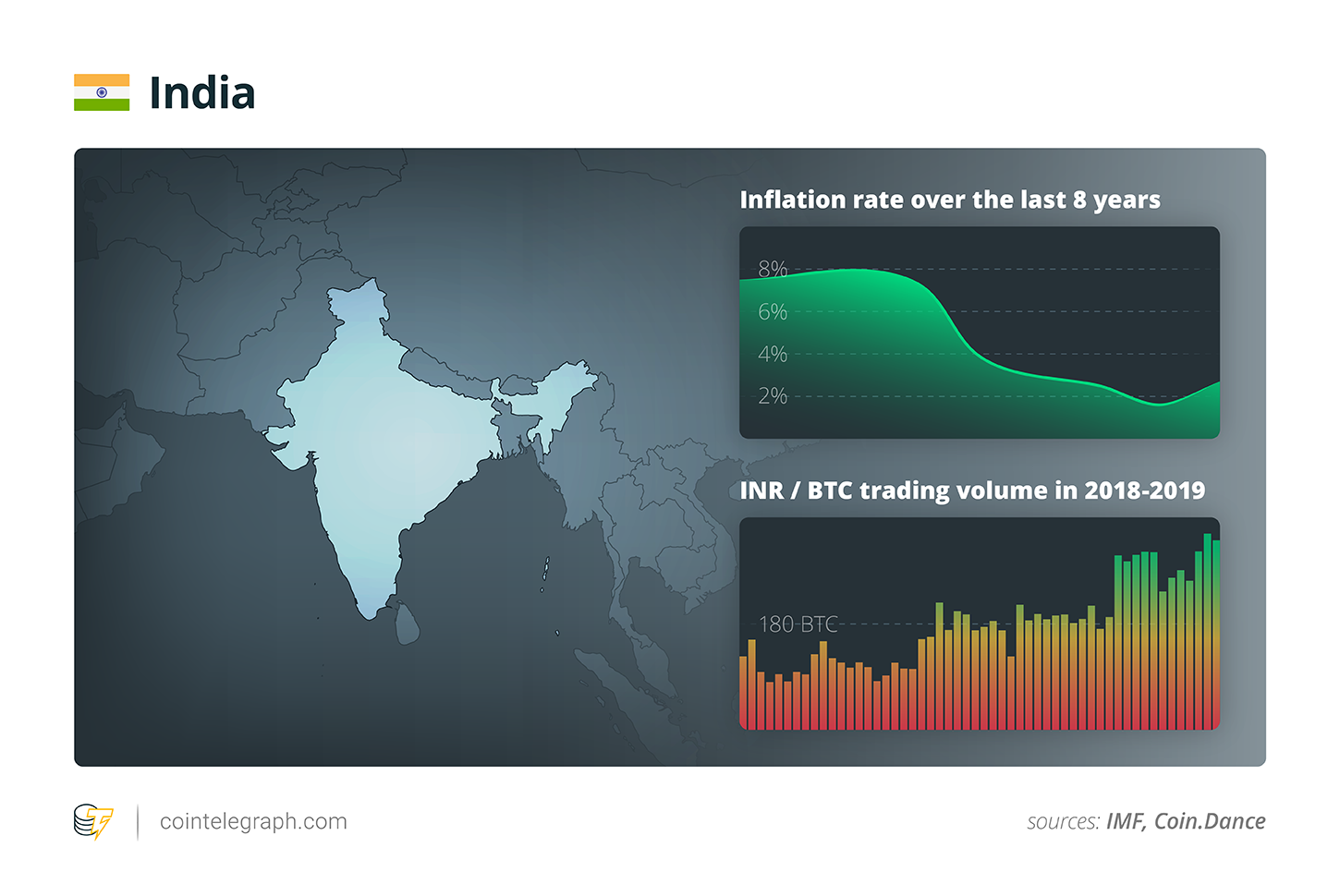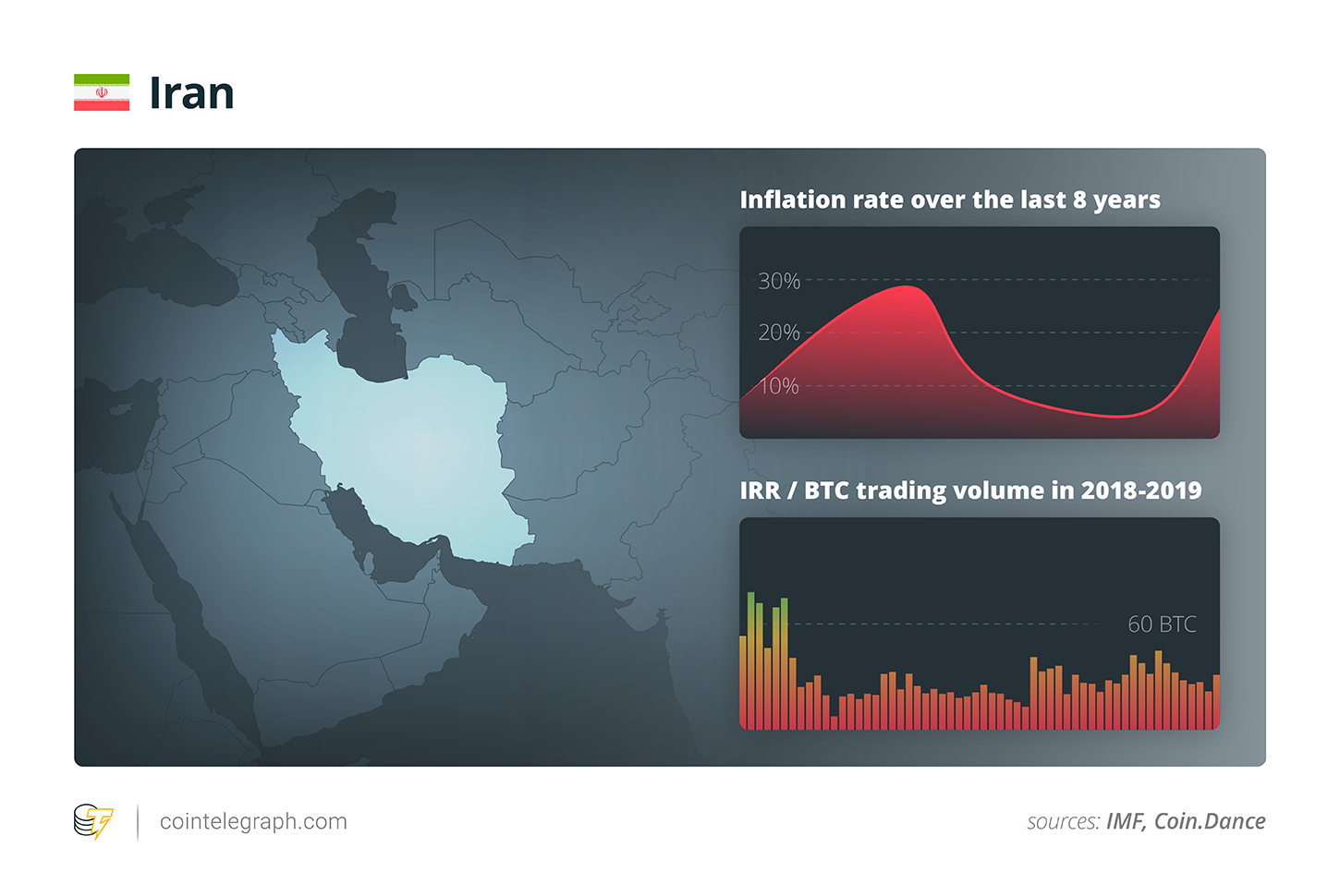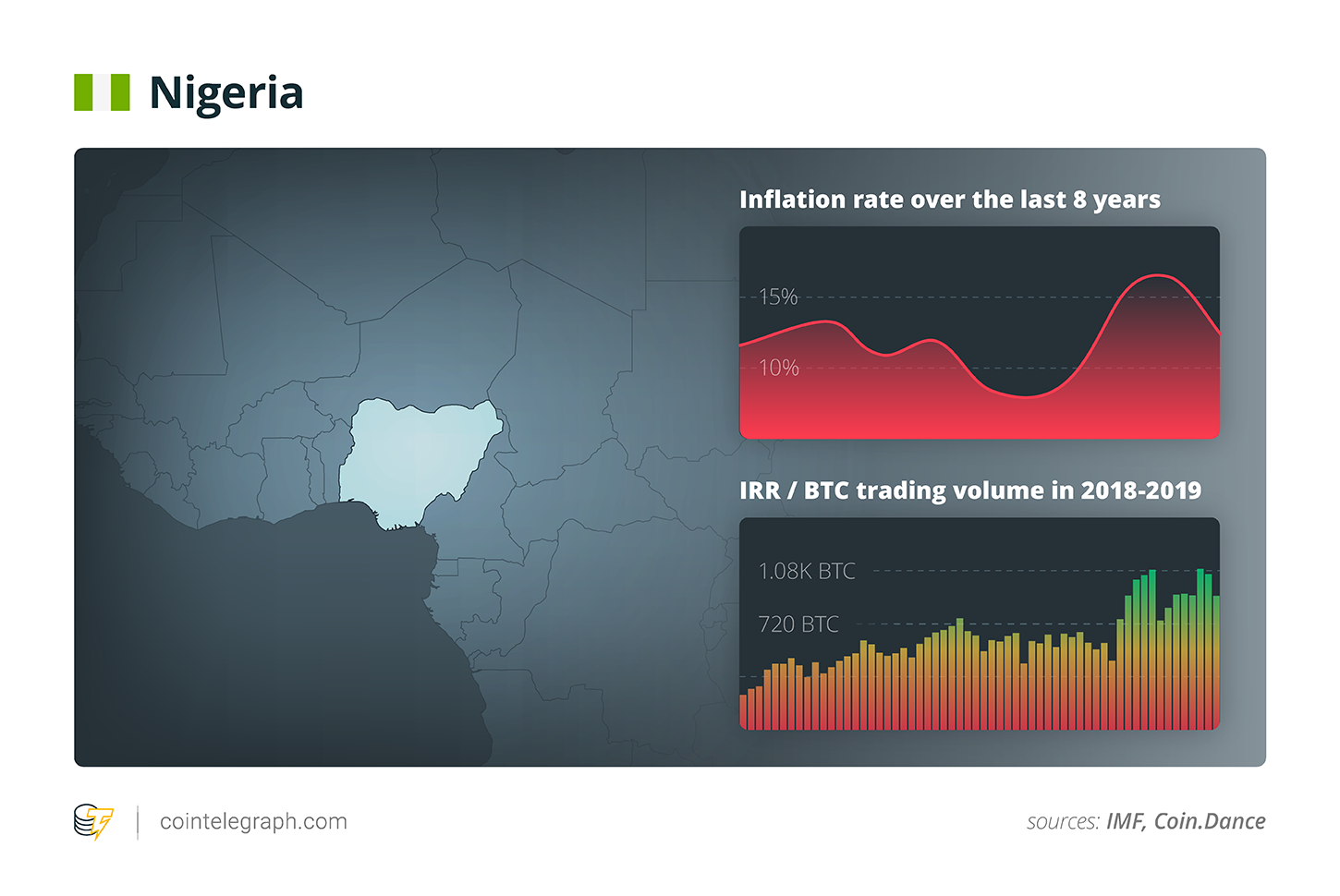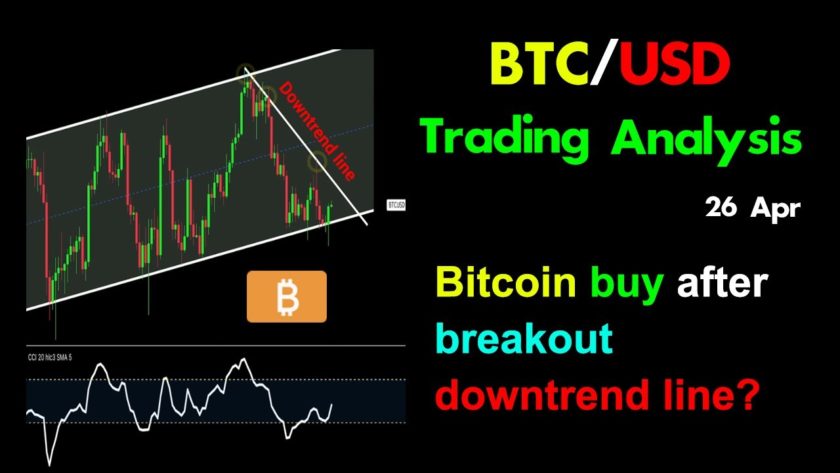Just when it seemed like the economic and political situation in Venezuela couldn’t get much worse, it has. Back in December, the Venezuelan bolívar witnessed its peak annual inflation rate for 2018, with this rate coming in at a dizzying 80,000 percent, according to the calculations of Steve Hanke of John Hopkins University. However, with the United States’ imposition of sanctions against Venezuela’s state-owned oil company on Jan. 28, and with Juan Guaido self-declaration as interim president of the South American nation on Jan. 23, this already dire situation has only deteriorated further. Yearly inflation has now reached around 139,000 percent, and Venezuelans have found it even more difficult to buy basic necessities.
Cointelegraph has already shown in a 2018 article how Venezuela‘s recent plight resulted in a surge in popularity of Bitcoin and other cryptocurrencies, while data from Coin Dance reveal that over 35,000 Bitcoin (worth around $127 million at today’s prices) was traded for bolívar on the LocalBitcoins crypto exchange over the entire course of last year. However, even if it’s only two months into 2019, the new year has brought new peaks of trading activity for Bitcoin and the Venezuelan bolívar, with the weekly LocalBitcoins totals for the first two weeks of February — 2,004 and 2,454 — exceeding anything seen in any month of 2018.
Source: Coin.dance
Venezuela’s increasingly fragile circumstances have therefore provided further confirmation of the strong link between imperilled economies and crypto adoption, yet this link also finds confirmation from other nations facing similar, if not quite as acute problems. Turkey, Iran, Nigeria and India have all faced economic or inflationary pressures over the past year, and a growing number of their citizens have adapted to such pressures by turning to crypto. And while their use of cryptocurrencies isn’t on the level of Venezuela’s, there has been a noticeable growth in recent months, indicating that the idea of using Bitcoin and other coins as alternative stores of value is gradually taking root in their societies.
Venezuela
In the first month of 2018, some 807 Bitcoin was traded for bolívar on the LocalBitcoins exchange. In the first month of 2019, this number hit 6,347, rising to 10,805 if you happen to add the first two weeks of February (according to the most current Coin Dance data).
Given that the total for all of 2018 was 35,000, it’s clear that Venezuela is on its way to hitting a new national record for Bitcoin trading, especially in light of how the U.S. has stepped up its economic war against the socialist government of Nicolas Maduro. The United States’ most recent sanctions prevent the state-owned oil company — Petroleos de Venezuela, S.A. (PDVSA) — from accessing $7 billion in assets it holds in America, while also stopping all sales of oil to the U.S., a market worth around $11 billion a year to PDVSA.
As a result, the Venezuelan bolívar is likely to lose even more of its dwindling value, given that the government will have to finance more of its growing debts by printing larger quantities of the national currency. And as happened in 2018, the deepening of this crisis is on course to strengthen the reliance of Venezuelans on Bitcoin and other cryptocurrencies. In fact, as the above figures for the LocalBitcoins exchange indicate, this effect already began taking shape in January, which saw more trading activity than any other month in Venezuelan history. Yet, the effect of Venezuelan strife on cryptocurrency isn’t restricted only to Bitcoin, since other coins are witnessing comparable — if not quite as pronounced — spikes in use.
Chief amongst these is Dash, which near the end of December celebrated the 2,500th merchant in Venezuela to accept it. Back in August, it could boast of only 1,000 merchants, indicating the impressive emergence it has witnessed since then. And seeing as how the count of the merchants listed on its DiscoverDash portal reveals that the current figure is 2,605, it’s apparent that it is still rising and likely to continue rising for the foreseeable future.
This expansion is the product of Venezuela’s unresolved economic and financial issues. However, in contrast to the possible perception that the country is ruled by a prohibitive, iron-fisted government, it would seem that the Maduro administration – in its desperation – is tentatively taking steps to facilitate and profit from the rising prominence of cryptocurrencies like Dash and Bitcoin. This has become all the more likely in light of how American sanctions are, according to certain analysts, killing off the petro, which was launched in early 2018 but which quickly suffered from a U.S. ban.
For example, on Feb. 9, the National Superintendency of Crypto Assets and Related Activities (SUNACRIP) published new regulations, which introduce commissions and monthly limits on remittances sent in crypto to Venezuelan residents. This commission (payable to SUNACRIP) would be a minimum of 0.25 euro ($0.28) and a maximum of 15 percent of the value of the remittance, while the monthly limit would be set at $600.
This move by SUNACRIP follows in the wake of the government’s recent crypto bill, which came into force on Jan. 31 and which forces all crypto exchanges and miners to apply for licenses. As with the introduction on Jan. 9 of a law that requires people and firms operating in crypto to pay their taxes in crypto, there’s no denying that it indicates a move on the government’s part to harness cryptocurrencies for its own increasingly endangered ends. Nonetheless, it also serves as a message to the Venezuelan population that the government is effectively embracing its move to Bitcoin and other coins, despite the fact that the Maduro administration had cracked down on Bitcoin mining in the past, for example.
While commissions on crypto remittances might potentially have a depressive effect on the thriving Bitcoin and Dash markets in Venezuela, there are signs that Venezuelans will become increasingly able to source their own crypto without needing someone to send it to them from abroad. Toward the end of January, Venezuela’s first ever crypto ATM opened in Caracas, supporting withdrawals in Bitcoin, Dash and Litecoin. This may be the only such ATM in Venezuela at the moment, but its installation shows that, despite already enjoying impressive growth in 2018, cryptocurrency is likely to enjoy further expansion in the Bolivarian Republic in 2019.
Turkey
Venezuela may be the starkest example of how financial crises can encourage cryptocurrency adoption, but it isn’t the only one. One of the biggest economies to suffer an inflationary crisis in late 2018 was Turkey, where the Turkish lira hit a record low of 7.24 against the U.S. dollar on Aug. 13, soon after the Trump administration introduced higher tariffs against Turkish steel and aluminium. And even though the government of Recep Tayyip Erdogan took the remedial step of hiking interest rates to 24 percent on Sept. 13, the lira’s inflation rate actually increased after August, when it was 17.9 percent. It rose to 24.5 percent in September, to 25.2 percent in October, and has since “settled” to just over 20 percent.
In response to the devaluation of the lira, the Turkish people have shown an increased willingness to trade Bitcoin, as indicated by data from LocalBitcoins and other exchanges serving the Eurasian country. For example, statistics provided by CryptoCompare show that the trading of Bitcoin saw a steady and overall increase in the second half of 2018, a period that also witnessed a number of noticeable spikes (particularly during the economically turbulent months of August, September and October). On May 17, daily Bitcoin volume was only 60, yet by August, this had mounted to a daily average (for that month) of approximately 255.5, with the peak for the month being 830.
The peak was reached on Aug. 10, just a day after Erdogan’s ill-fated “buy the Turkish lira” speech, which precipitated another cliff-edge drop for the struggling currency. It was almost as though the Turkish populace (correctly) perceived the president’s urges as a tacit admission that the lira was in serious trouble, so many of them went out a did something commendably rational: They dropped the lira and started buying Bitcoin (among other stores of value).
However, as was noted in last year’s article on currency crises, one of the biggest distinctions between Turkey and Venezuela is that the Turkish population has access to foreign currencies. As such, there was a pronounced jump in U.S. dollar prices at the height of the Turkish lira crisis, as Turkish traders and laypeople turned more to the world’s reserve currency as a store of value than to alternative stores, such as Bitcoin. This is why the recent increases in Bitcoin trading against the Turkish lira haven’t been on the scale of trading against the Venezuelan bolívar.
Nonetheless, compared to nations with comparable gross domestic product (GDP) levels, Turkey has witnessed above-average trading. Sweden, Switzerland and Mexico are 22nd, 20th and 15th for nominal GDP, according to the International Monetary Fund (IMF), yet their daily trading peaks for 2019 were 32, 45 and 636, respectively. By contrast, Turkey — which the IMF pegs as the 19th-biggest economy in the world — saw a 2018 peak of 877 (on Nov. 20), underlining the extent to which an unstable national currency can drive people toward crypto.
India
While Turkey was “one of the biggest economies to suffer an inflationary crisis in late 2018,” it was not, in fact, the biggest. This accolade belongs to India, which — much like Turkey — was adversely affected by American protectionism (although it also had its own sources of difficulty, such as inflation). By September, its currency, the rupee, had become the worst-performing in Asia, losing 12 percent of its value against the U.S. dollar since the start of the year, while it continued to see pointed falls as late as December.
And as one might expect, such declines were complemented by upticks in Bitcoin trading. In the second quarter of 2018 (after the end-of-2017 bull run had calmed down), the figures show a daily average of 18.4 BTC. By contrast, the third and fourth quarters — when the rupee crisis began setting in — saw daily averages of 28.5 and and 30.6 BTC (and data is missing for the last two weeks of December). Compared to Q2 2018, these two figures represent increases of 54.9 percent and 66.3 percent, while data for comparably sized economies show smaller increases across these two periods.
For instance, CryptoCompare data for the British pound shows a decrease of 14.9 percent between Q2 and Q3 2018, and an increase of only 15.2 percent between Q2 and Q4. In other words, while there was a general, worldwide increase in the volume of Bitcoin trades over Q3 and Q4, it was more tangible in some nations than others. And for the most part, the nations where it was more tangible were those that were experiencing periods of financial turbulence and uncertainty, like India, Turkey and (especially) Venezuela.
Iran
This is also apparent in Iran‘s case, even if the effect is much subtler. On Nov. 4, the U.S. introduced sanctions against Iranian shipping, banking and oil. Or rather, it reintroduced sanctions that had been removed in 2015 by the Obama administration as part of a conciliatory deal on Iran’s nuclear program. These sanctions had in fact hit the Iranian economy and the Iranian rial as early as June, when the Trump administration announced that it was withdrawing the U.S. from the aforementioned deal, and that the sanctions would kick in again after a “wind-down” period.
By September, this announcement was the biggest factor behind the rial having lost around 70 percent of its value since May, with one U.S. dollar worth approximately 150,000 rials on the black market in September. In the midst of this collapse, there has been a noticeable increase in trading volumes for the BTC/rial pair, although once again the increases aren’t anywhere near the level witnessed in Venezuela, largely because the rial’s inflation rate sat at around 203 percent at the apex of the crisis (compared to over 112,000 percent for Venezuela), and because Iranians had access to dollars and other stores of value (e.g., gold).
For example, according to the data for the BTC/rial market on LocalBitcoins, the average daily volume in Q2 2018 was a modest 3.32 BTC. In Q3 2018, this rose slightly to 3.61 BTC, while in the fourth quarter of the year — when the sanctions were activated — it rose to 4.1 BTC. Coming in respectively at 8.7 percent and 23.8 percent (compared to Q2), these are only modest rises, but they’re still more than can be witnessed in other nations with comparable GDP. For instance, the IMF puts Norway at 28th for nominal GDP (and Iran at 30th), yet between Q2 and Q3 2018 trading of Norwegian krone for Bitcoin declined by 29.9 percent — while between Q2 and Q4 2018, it declined by 25.9 percent.
Nigeria
Once again, at a time when similarly sized economies are seeing stagnation or even a downturn in their Bitcoin market, a country in financial crisis is seeing an upturn. Another country that bears witness to this effect is Nigeria, which, despite not suffering from any particularly severe crisis in 2018 (and despite not being the object of American sanctions), has still had a rough economic ride recently, having only just exited a five-year recession at the beginning of 2018. Its currency — the naira — is also expected to experience an inflation rate of 13 percent in 2019, having stood at around 11 percent at the end of last year.
The north African nation is therefore ripe for interest in Bitcoin, something that is confirmed by the data. Between Q2 and Q3 2018, BTC/naira volumes increased by 17.7 percent, from 144.8 BTC per day to 170.4. And between, Q2 and Q4, these same volumes increased by an impressive 52 percent. This strong growth in the final quarter of the year was partly the result of the return of rising inflation, which had bottomed out at 11.14 percent in July, only to begin rising again toward the end of the year, putting a strain on the ability of Nigerians to purchase food using the naira.
To a large extent, Nigerians have for several years now had a particular attraction toward Bitcoin, given that the oil-dependent economy has had a tough financial ride. And with the Nigeria-based FSDH Merchant Bank predicting an inflation rate of 13 percent for 2019, it’s likely that this attraction will remain strong for the foreseeable future, particularly when the weakness of the naira is part of the explanation as to why more people live in extreme poverty in Nigeria than in any other country in the world.
Conclusions
However, while the above data all indicate that people move toward Bitcoin and other cryptocurrencies during financial crises, it’s worth making a few important qualifications.
First of all, there’s little doubt there is evidence for movement, yet most of the push toward crypto is still distinctly modest, particularly when compared to the end-of-2017 bull market. For example, Turkey, Iran and India may have seen rises in BTC trading toward the end of 2018, yet these rises generally fall short of those seen at the end of the previous year. In Iran, the highest number of Bitcoin ever traded on a single day was 24, a quantity that was traded on Feb. 6, 2018. In India, Nov. 29, 2017 saw 592 BTC traded for rupees, while the biggest peak of Q4 2018 was 79 BTC (on Nov. 20). And in Turkey, Coin Dance reveals that the weekly trading average in Q4 2017 was 32 BTC, while in Q4 2018 it was 16 BTC (although CryptoCompare data show that the end-of-year peaks for 2017 and 2018 are roughly comparable).
The only country where there is a strong exception to this rule is Venezuela, and it’s here that the biggest lessons regarding crypto adoption in the face of economic crises can be learned. That is, even though “normal” high inflation can lead people toward the likes of Bitcoin, it’s apparent that, in order to push people en masse toward crypto, excessive hyperinflation is required, as well as a lack of alternative reserve currencies and an economic crisis of near-catastrophic proportions.
In Venezuela, with inflation currently exceeding 100,000 percent, and with millions of people struggling to feed themselves, these three conditions have certainly met. Given that foreign currency controls had been in place since 2003, and given that the Venezuelan bolívar is now all but worthless, people have had almost no choice but to turn to Bitcoin, Dash and other coins. By contrast, people in Turkey, Iran, Nigeria and even Zimbabwe (another nation that suffers from high inflation) have had access to other stores of value, while their usual currencies have still been usable as everyday currencies, despite suffering from volatility. As such, there hasn’t really been a “transition” to crypto comparable to that evident today in Venezuela.
Even so, it’s interesting to note that, even without large-scale adoption, there has been more trading of Bitcoin in these countries in the past few months than in previous quarters. And while this effect isn’t massively significant, it at least demonstrates that the idea of using crypto as a reserve currency and as a way of storing value is increasingly gaining, well, currency.


